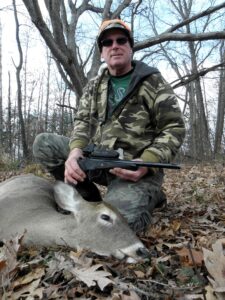A Plan for Michigan’s Wildlife takes Shape
By Glen Wunderlich
Wildlife management strategies in Michigan have produced some rather dubious results over the years and recent results depict an ongoing trend. For example, deer/vehicle collisions are up 6 percent over the past 10 years making Michigan second in the nation at 97,856 in 2011/2012. At an average cost of $3,000 per incident, all Michigan drivers share in the expense through insurance premiums. At the same time, hunters have killed one-percent less antlerless deer over the past three years. We are also in second place in the country for the most antlered bucks taken by hunters, but the figures reflect a whopping 59 percent being adolescents. That percentage places Michigan at the very top (or, bottom, if you will) when it comes to quality hunting opportunities. We continue to kill more juvenile deer than any other state.
Is it any wonder why Michiganders travel to neighboring states to spend their hunting dollars? If ever we are going to turn it around, we must change strategies. The antler point restrictions being proposed in northern Michigan will prove to be a wise decision, but more needs to be done. And, the DNR’s proposed fiscal year 2014 budget displays a bold move toward that end.
An entirely new system of licensing is on the table featuring a base hunting license fee of $10, which would include a small game hunting license and would reduce the cost of an all-species fishing license. However, to hunt deer would require another tag at $20, effectively doubling the current cost. No doubt, that’ll keep some folks on the sidelines (7 percent according to DNR estimates) but take note of the positives.
The extra revenue would create a big game program specific to the Upper Peninsula. It would provide the use of satellite collars for bears to collect scientific information. Food and cover for deer on public and private land would be enhanced by increasing oak management to replace lost beech and ash. It would create early succession forest habitat, the number of openings and food plots, and would help to control invasive plant species. The pheasant restoration initiative would be expanded along with more grassland complexes greater than 250 acres. There would be more acres in the Hunting Access Program and improved waterfowl management.
There’s a lot more including the expansion of small game opportunities with the addition of brush piles and food plots on public lands. And, if you are into shooting, there would be more target shooting opportunities on state game areas.
New revenue of $4,500,000 would be available to increase education/outreach/public safety contacts by hiring additional conservation officers. Fisheries habitat improvement, fish production, etc. would gain an additional $5.5 million in revenue.
Our fees lag behind Midwestern states and so do our wildlife management results. It’s time to get behind some meaningful change and if money can fix our woes, then so be it. But, we’ll need to see positive results, not more bureaucracy.




